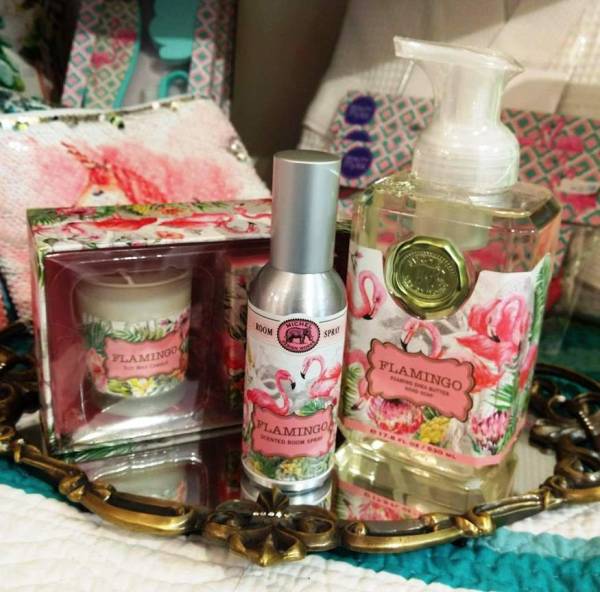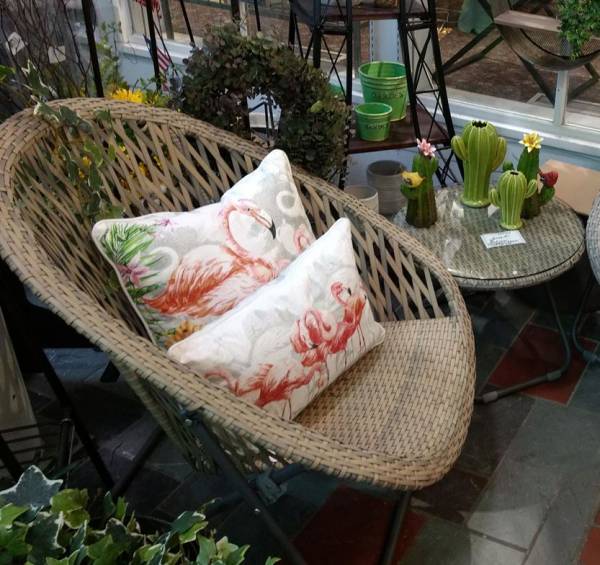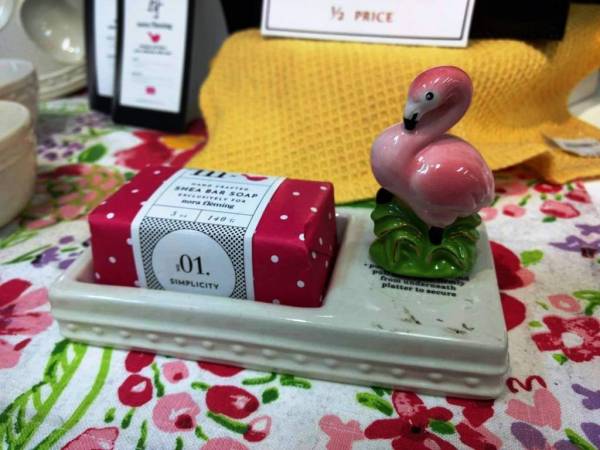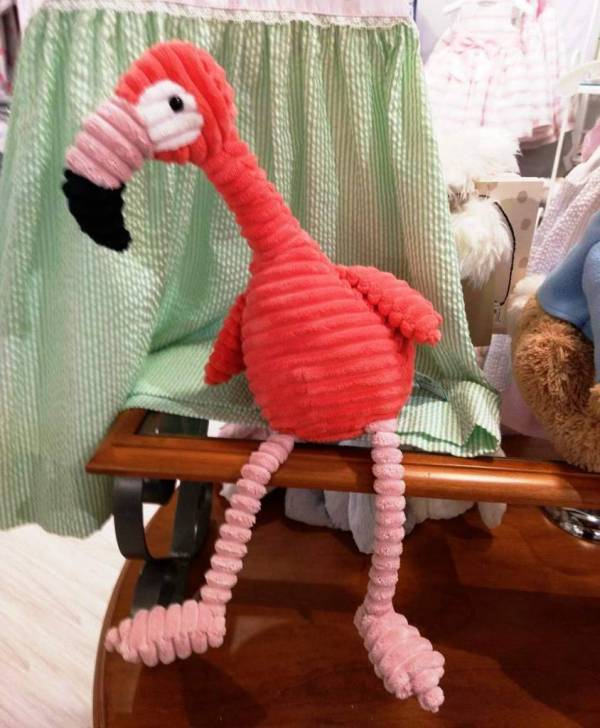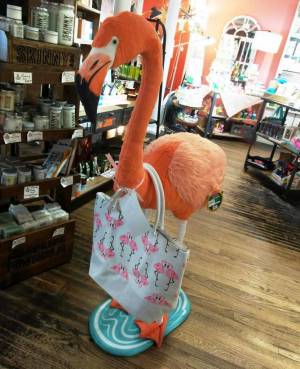
Flo the 'mingo in our Bath Shop now has a whole flock of fine feathered friends throughout the store.
We all know flamingos are uniquely beautiful, and most of us know that they get their color from pigments in the algae and crustaceans they eat, but what else do you know about them?
Here are 5 fun facts to amaze your friends with as you tote around your flamingos this season:
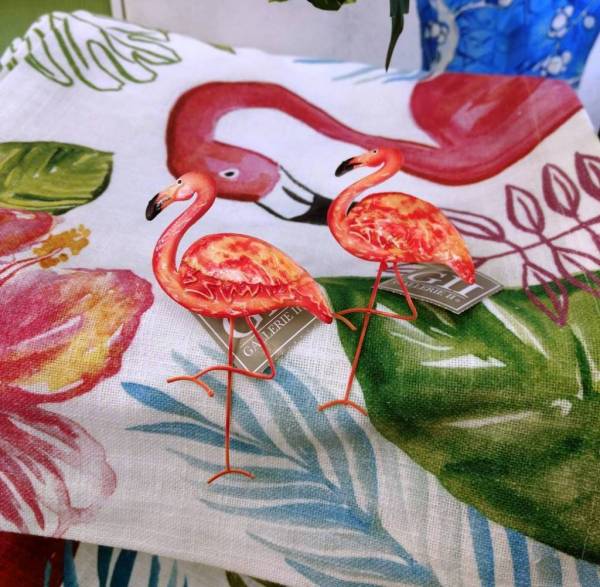
Napkin Rings and Placemats in our Linen Room
They're older than you'd think.
In the south of Spain, an accurate depiction of a flamingo was discovered in cave paintings that date back to 5,000 B.C.!
Soaps and Lotions in our Bath Shop
Nobody knows—not even scientists—why flamingos stand on one leg.
The theory that it's to preserve heat by tucking the leg against the body is foiled when you consider that flamingos in hot climates also exhibit this behavior. Could it be that it's simply more comfortable to stand that way? Not in our experience.
Slippers & Socks in our Shoe Room
Flamingo bills are upside down.
Flamingos feed with their heads down, so their bills turn upside down in the water. Their bill has adapted. In most birds, a smaller lower beak works against a larger upper one. With flamingos, it's the opposite.
Pillows in our Conservatory and Linen Room
It's always "The Bachelorette" in Flamingo World.
Female flamingos select the male with whom they'll mate. Unlike what we see on America's favorite dating reality show, the courtship rituals of flamingos tend to be subtle. If the relationship doesn't work out (i.e. reproduction is unsuccessful), she may choose another male.
Nora Fleming in our Housewares Dept.
Baby flamingos suck the color out of their parents.
Both male and female flamingos feed their young by regurgitating crop milk from their upper digestive tracts. While feeding their children, the parents' color is drained to the point they turn a pale pink or even white. They regain their full color when the child is independent enough to eat on its own.

